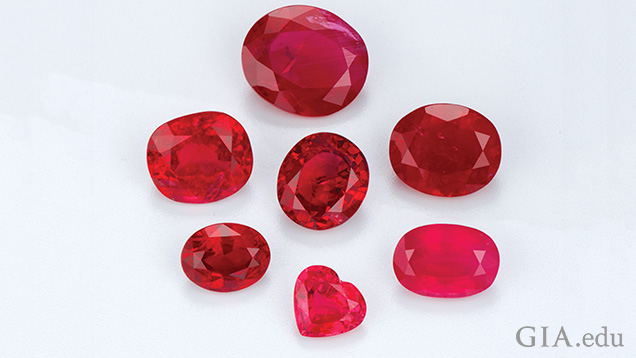Ruby vs. Pink Sapphire: Understanding the Differences
- Brian Height
- Jul 6
- 3 min read
Updated: Jul 10
When it comes to red and pink gemstones, the terms “ruby” and “pink sapphire” are sometimes used interchangeably — but technically, there are important distinctions. At Height’s Fine Jewelry, we believe that understanding these differences not only empowers you but also deepens your appreciation for these breathtaking gems.

What Do Rubies and Pink Sapphires Have in Common?
Both rubies and pink sapphires are varieties of the same mineral species: corundum. Corundum is naturally colorless in its purest form and acquires its beautiful hues from trace elements during its formation deep in the earth. The presence of chromium gives corundum a range of red to pink colors—resulting in the rubies and pink sapphires you see in fine jewelry.
So, What Really Defines a Ruby?
The simplest way to think about it is that rubies are red corundum. However, this red color isn’t always a straightforward, single shade. Rubies can display tones from vibrant, pure red to slightly purplish or orangy red. The intensity of the chromium and subtle differences in chemical composition influence these variations.
According to the Gemological Institute of America (GIA), for a corundum to be classified as a ruby, red must be the dominant hue. The GIA uses a controlled set of comparison stones, called masterstones, to evaluate and confirm this. This standardized approach has helped clarify the line between ruby and pink sapphire in the gem trade.
Enter Pink Sapphire—the Close Cousin to Ruby
If the pink tones are sufficiently strong to make red no longer the dominant hue, the gem is classified as a pink sapphire. Pink sapphires can range from soft blush to vibrant bubblegum pink, and even leaning toward purplish pink.
It’s worth noting that this borderline between ruby and pink sapphire is sometimes fluid and influenced by cultural differences and market preferences:
In countries such as Sri Lanka, lighter pink stones have historically been considered rubies.
In many Western markets, these same stones are often categorized as pink sapphires.
These distinctions don’t diminish the beauty of either gem but are useful to understand, especially when making an informed jewelry purchase.
Why Does the Difference Matter?
For many, personal preference is the ultimate deciding factor—some may favor the passionate intensity of ruby’s fiery red, while others are charmed by the delicate allure of pink sapphire.
That said, rubies tend to command higher prices per carat than pink sapphires, especially for top-quality stones free of eye-visible inclusions. This is partly due to the rarity of fine rubies, particularly those with the vivid, pure red color historically associated with legendary stones like the “pigeon’s blood” rubies.
Meanwhile, pink sapphires offer a more accessible entry point into the vibrant world of corundum gems, often with a wide array of gorgeous hues and excellent durability.
How Height’s Fine Jewelry Guides You
Whether you’re drawn to the passionate depths of ruby or the playful charm of pink sapphire, our process makes exploring and selecting your perfect gem seamless and transparent. As a client, you’ll work directly with a GIA Graduate Gemologist who provides clear, jargon-free guidance — empowering you to make fully informed decisions based on your unique taste and values.
Together, we’ll create a custom piece that celebrates your story and style—whether it’s a blazing ruby engagement ring or a softly radiant pink sapphire necklace.
Discover the allure of rubies and pink sapphires with Height’s Fine Jewelry—where expertise meets your vision. Ready to start your journey? Contact us today to learn more.




Comments